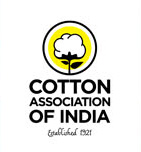Sajid Mahmood
Feb 06, 2025
In the contemporary global agricultural landscape, four distinct types of cotton are commercially cultivated: American cotton, Egyptian cotton, Desi cotton, and African cotton.
Among these, American cotton accounts for 90 percent of global production, Egyptian cotton 8 percent, and Desi and African cotton each approximately 2 percent. In Pakistan, nearly 98 percent of the cultivated area is dedicated to American cotton, with only 2 percent allocated to Desi cotton.
Compared to other crops, cotton is highly sensitive and faces numerous challenges. Pakistan’s cotton sector is currently grappling with issues such as climate change, water scarcity, substandard and adulterated seeds, exorbitant input costs, lack of a support price, pest attacks—particularly by whitefly and pink bollworm—and rising electricity and diesel prices.
These factors have rendered cotton cultivation unprofitable, prompting farmers to switch to alternative crops like sugarcane, rice, and maize. While these challenges are widely discussed on various platforms, addressing just a few fundamental issues could significantly enhance cotton yields and profitability.
One major concern is the lack of a declared support price for cotton and the imposition of an 18% sales tax on domestic cotton, adversely affecting both farmers and the ginning industry. These issues, if left unresolved, could severely impact the upcoming cotton season.
To increase per-acre productivity and develop climate-resilient cotton varieties, a complete overhaul and modernization of cotton research institutions are imperative. Currently, the Pakistan Central Cotton Committee (PCCC), the country’s primary cotton research body, faces severe financial and administrative crises. Without adequate investment in these institutions and their researchers, expecting groundbreaking research outcomes would be unrealistic. Research is inherently a long-term process, and sustainable results require consistent financial and strategic support.
Globally, countries allocate a significant portion of their GDP to research and development (R&D) to achieve agricultural advancements. The United States spends 3.46% of its GDP on R&D, with substantial emphasis on agriculture. China allocates 2.43% to modernize its economy, including agricultural advancements. India spends 0.65%, focusing on seed improvement and irrigation systems. Pakistan, however, spends a mere 0.16%, which is inadequate for addressing the growing demands of agricultural research. This discrepancy highlights the urgent need for Pakistan to prioritize agricultural R&D, especially in the context of climate change, to ensure sustainable cotton production.
Another critical challenge is the lack of certified seeds. Estimates suggest that Pakistan’s annual requirement for certified cotton seeds is 45,000–50,000 metric tons, yet only 30% of this demand is met. The remaining 70% consists of unapproved seeds, which negatively impacts cotton yields.
Addressing this gap requires substantial investment in seed technology. Transitioning from conventional breeding techniques to advanced genetic technologies is essential for developing high-yield, disease-resistant, and climate-resilient cotton varieties.
Adopting genetically modified (GM) seeds can enhance cotton’s productivity, quality, and resilience. Modern seed technology can also reduce input costs and increase per-acre yields, making cotton cultivation profitable for farmers once again. Public-private partnerships must be encouraged to ensure the availability of certified, high-quality seeds.
The increasing cultivation of crops like sugarcane, rice, and maize in traditional cotton zones is another significant issue. Fertile lands ideal for cotton are being diverted to water-intensive crops, which deplete soil fertility and exacerbate water shortages. For instance, sugarcane requires three times more water than cotton, further straining Pakistan’s already limited water resources.
A comprehensive strategy is needed to address the declining trend in cotton cultivation. This includes identifying and addressing the reasons behind farmers’ preference for alternative crops, ensuring consistent support mechanisms such as crop insurance and competitive market prices, and introducing policies to regulate crop zoning and discourage non-cotton cultivation in traditional cotton areas.
To increase the area under cotton cultivation, untapped regions in Balochistan and Khyber Pakhtunkhwa must be explored. These regions offer favorable climatic conditions for cotton and can significantly contribute to national production if equipped with ginning facilities and necessary infrastructure.
Unpredictable weather, sudden rains, floods, and rising temperatures also pose challenges. Equipping meteorological departments with advanced technology to provide accurate forecasts will enable farmers to adopt timely strategies. Similarly, research institutions must develop early warning systems for pest outbreaks and other threats to safeguard cotton crops.
Pakistan’s cotton industry requires both immediate and long-term measures to address its challenges. Investment in research, seed technology, and farmer support is critical to reviving the sector. With concerted efforts from the government and stakeholders, a conducive environment for profitable and sustainable cotton farming can be established. Addressing these issues effectively will not only boost cotton production but also play a pivotal role in strengthening Pakistan’s economy.
(Source: Business Recorder)
